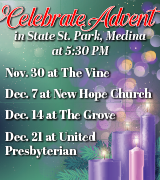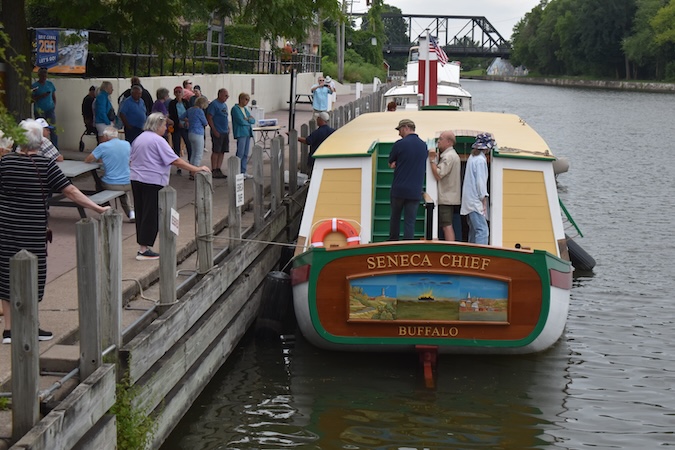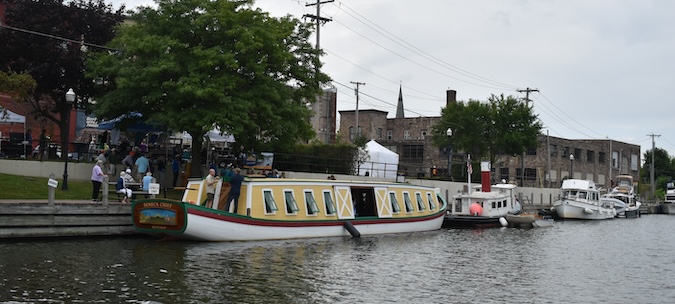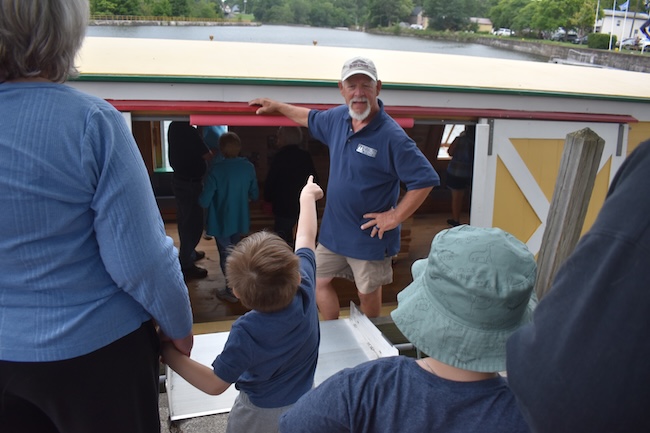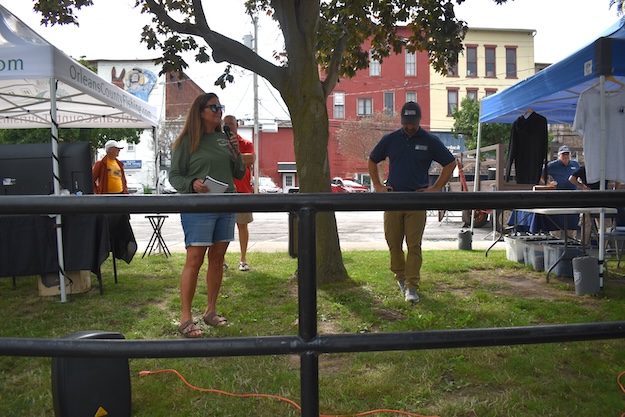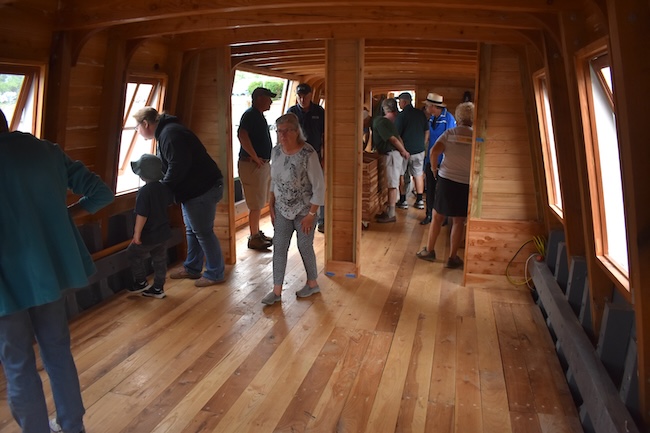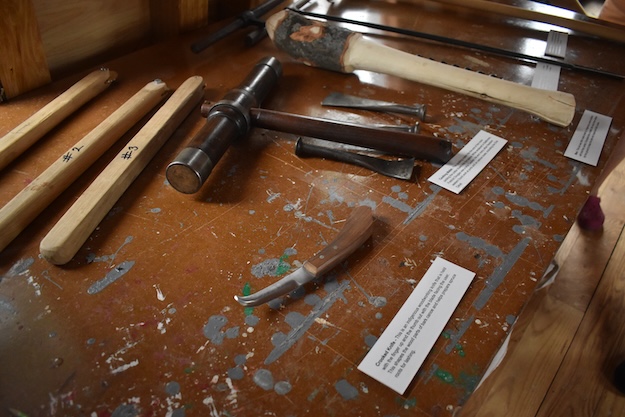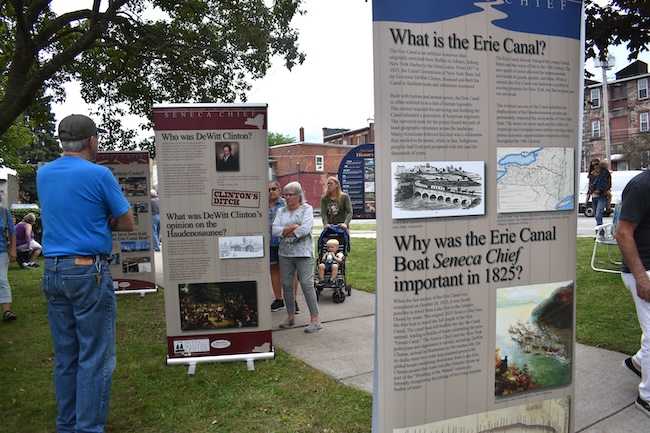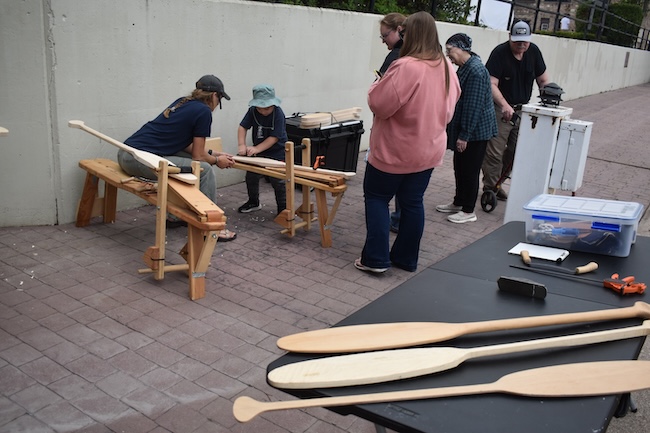Seneca Chief, replica of famed canal boat, welcomed in Medina
Photos by Tom Rivers
MEDINA – The Seneca Chief welcomed visitors at Medina’s Canal Basin on Monday evening. The boat is a reproduction of the original 73-foot-long Seneca Chief boat that opened the Erie Canal in 1825. It was the first boat to travel the canal from Buffalo to New York City.
The boat was constructed over nearly four years by volunteers at the Buffalo Maritime Center. Next year for the Erie Canal’s bicentennial, the Seneca Chief will travel the entire canal as a tribute to the original boat that carried Gov. DeWitt Clinton across the canal.
The Seneca Chief is doing a test run from Aug. 9 to Aug. 18 of that epic trip, going from Buffalo to Rochester and then back again. The Seneca Chief will be back in Medina on Friday with tours of the boat from 4 to 7 p.m.
Roger Allen, a master boat builder with the Buffalo Maritime Center, welcomes visitors to the boat when it was stopped in Medina on Monday evening. The boat will be open for tours in Brockport today from 4 to 7 p.m. at Harvester Park at 49 State St.
Medina Mayor Marguerite Sherman thanks the Buffalo Maritime Center for including Medina in the stops for the Seneca Chief.
Brian Trzeciak, executive director of the Buffalo Maritime Center, said the organization wants to highlight the Erie Canal’s role in the state, while sharing stories and techniques of traditional boatbuilding.
“We love this town,” Trzeciak said after being introduced by Sherman.
The journey so far is going very well, with the boat being pushed by the tug CL Churchill.
“This is a wondrous moment for us,” Trzeciak said.
Visitors check out the inside of the Seneca Chief.
The Maritime Center said the boat’s keel, frames, and other structural timbers were made of white oak. The keelson was a single 60-foot-long piece of reclaimed Douglas Fir.
The center says this about the wood in the boat:
“The planking consisted of two layers of 1-inch-thick cypress with a waterproof dynel cloth set in epoxy between the layers. The outer layer of planking was caulked with cotton in the traditional manner. This combination of modern and traditional planking methods was designed to help the boat stay watertight even if it spent winters out of the water.
“All of the bolts used in the backbone structure were forged in the BMC’s own machine shop by a crew of volunteers. This crew also produced several specialized tools and hardware needed to build the boat.”
Tools on display include a crooked knife in front. This indigenous woodworking knife is held with the finger up and thumb out with the blade facing the user. The knife shapes the wood parts of bark canoe and helps prepare the spruce roots for lashing.
There are informational displays about the Erie Canal, Gov. DeWitt Clinton, the Seneca Nation of Indians.
Visitors can try paddle shaping in one of the activities led by the Buffalo Maritime Center.


















